“In our extensive load tests, the forces that the hydraulic cylinder applies to the machine components play an important role. Electrical bending moment compensation allows the U10M force sensor from HBM to provide precise data, even when high shearing and bending forces act on the sensor in exacting measuring setups.”
Nils Dippon, test engineer Development and Demonstration Center at Liebherr
Testing Under Extreme Conditions: Liebherr Relies on the U10M from HBM for Structural Testing of Excavators and Dump Trucks (ADT)
At the new Development and Demonstration Center in Kirchdorf, Liebherr is testing the components and assemblies comprising its construction machinery under maximum loads – with high-performing U10M force sensors from HBM delivering precise results.
For challenging construction projects and material handling at the harbor alike: Powerful hydraulic excavators, dump trucks, and materials handling cranes from Liebherr are hard at work around the world, wherever there is a need to move large quantities of material quickly, reliably, and safely. A research and development team from Liebherr is working to test the new machines at maximum load capacity in the new, state-of-the-art Development and Demonstration Center at the flagship offices in Kirchdorf. For the extensive series of structural tests performed at its modern test bench facility, Liebherr relies on the U10M and S9M force sensors from HBM, the global market leader in measuring technology – for data with the greatest precision and maximum reliability.
Problem
At the Liebherr Demonstration and Testing Center, components for hydraulic excavators, dump trucks, and material moving cranes are mechanically tested under realistic conditions of use.
Solution
The forces generated are measured, with compensation for the bending moment, using sensors in the U10M series, while HBM strain gauges gather measurements at the same time on the components.
Results
Reliable measurement technology makes it possible to correlate the forces acting on the test piece with the load conditions in order to ensure the reliability of the components.
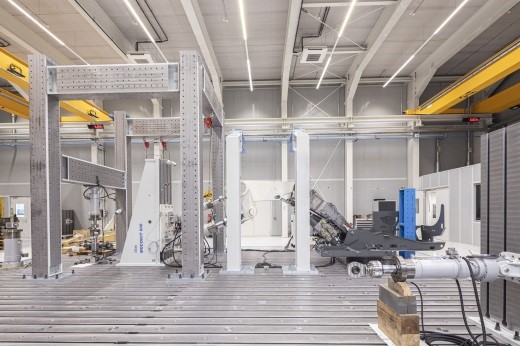
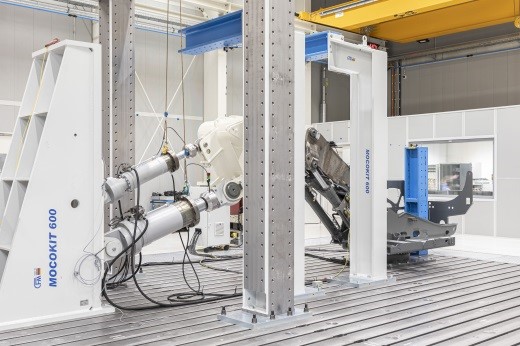
In order to ensure that the hydraulic excavators, dump trucks, and material moving cranes from Liebherr will perform reliably over the long run in the harsh working environment present on a construction site, in a scrap yard, or at a harbor, the company tests the load-carrying capacity and enhanced fatigue strength of its components very precisely. With the goal of securely testing the mechanical stability of components, Liebherr, one of the world’s leading construction machine manufacturers, commissioned a state-of-the-art Development and Demonstration Center in Kirchdorf an der Iller in 2018.
“During our load tests, we subject assemblies such as the hydraulic excavator extendable arm to loads in a few weeks that are equivalent to what an excavator would normally experience over the course of its entire service life,” says Nils Dippon, test engineer at the Liebherr Development and Demonstration Center. “The tests are often performed over the course of months. When you are investing this much and have such high standards, it is important to have measurement technology that we can rely on completely and over the course of the entire test phase.” It is for this reason that the experts at Liebherr put their trust in durable U10M force sensors with long-term stability.
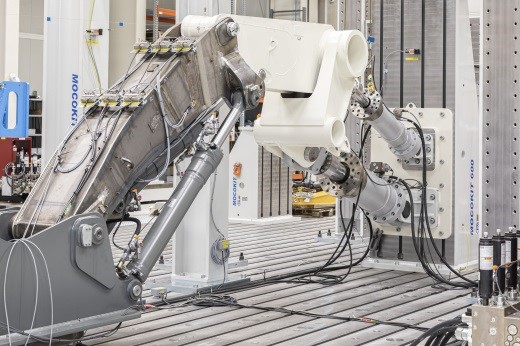
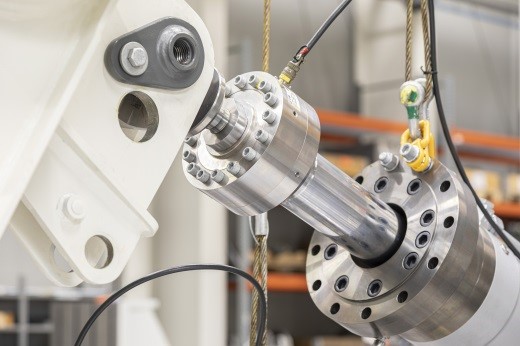
Loads Just Like in Real Life: Measure Force with the Greatest Precision
The Liebherr Development and Demonstration Center is the only one of its kind worldwide. Various testing stations are constructed on the 12 meter by 8 meter testing area. Up to six loading tests are performed here simultaneously. “Our tests provide vital data that allows us to design our components to stand up under high amounts of stress while also being as light as possible, in order to reduce energy consumption and achieve higher efficiency,” says Nils Dippon. “We test a wide variety of different parts here. Often, they are prototypes for a brand new model. With our modular clamping system, we set up a completely new test bench for every part and carry out tests with a variety of force applications. This requires top-notch measurement technology of course, that is capable of optimally covering a wide range of applications.”
In this job set-up, for example, an excavator’s revolving platform is mounted with an extendable arm. Right where the strut would normally meet the excavator shovel, the arm is connected to two hydraulic test cylinders via an adapter. “Our hydraulic cylinders are capable of pulling and pushing with a force of up to 1.2 Meganewtons,” Nils Dippon emphasizes. “This allows us to recreate loads that are likely to impact the excavator later on when it is used on a construction site or used for material handling.” In this case, the force is a decisive measured quantity that the test bench regulates. The component load is set using Y Series strain gauges (DMS) from HBM in order to analyze which loads in the structure originate from specific forces.
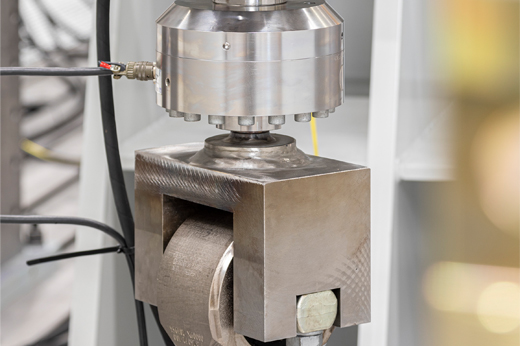
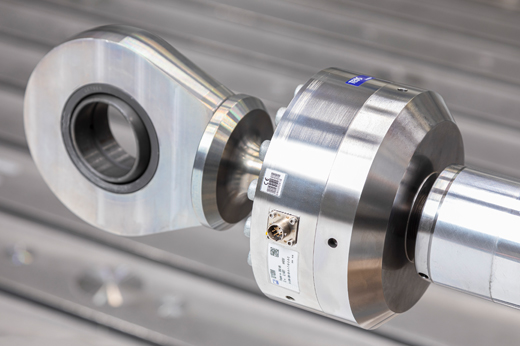
Precise Measurement Results at High Bending Forces
“Our U10M force sensor is optimal for the measurements taken during load tests at Liebherr,” says Thomas Kleckers, force sensor technology product manager at HBM. “The sensors are available with a maximum capacity ranging from 1.25 Kilonewtons to 2.5 Meganewtons and achieve very high accuracy, thus allowing for a wide measuring range. Its hermetically welded measuring body ensures long-lasting durability even in demanding industrial environments. For use in harsh industrial environments, there is also a U10M model that meets the requirements for Equipment Protection Class IP68.” Furthermore, the U10M Series sensors are also resistant to shock loads and vibrations.
One unique challenge associated with the tests performed by Liebherr is the mass of heavy test objects such as the big excavator extendable arm. “Bending forces can skew measurement results. That’s why we take measures as early as the test setup phase to stop bending moments from impacting the sensors. One way we do this is by relieving some of the load from the massive hydraulic cylinders and load application dummies by attaching counter loads using control wires. It is often impossible to fully compensate with our very large test objects,” explains Nils Dippon. “Thanks to its rugged measuring body and electrical bending moment compensation, the U10M force sensor provides reliable results even when lateral forces are involved. This allows us to configure very sophisticated job set-ups.” The U10M is tested and optimized in the HBM EMC lab, making it perfect for measuring in environments with strong electromagnetic fields – for electromobility for example.
“With the many options available, such as maximum capacity, adapters, calibration, and various connectors, over 11,000 different models of our U10M force sensors are available on demand and can still be adapted to the measuring task at hand,” says Thomas Kleckers.
„Our U10M Series force sensors achieve very high precision across a wide measuring range. This allows them to deliver highly detailed measurement data with maximum flexibility in the various measuring setups at the Liebherr Development and Demonstration Center. Our top-notch strain gauge technology will record even the smallest deformations of components with utmost precision. To create an extensive data foundation for further development.”
Thomas Kleckers, Product Manager for force sensors at HBM
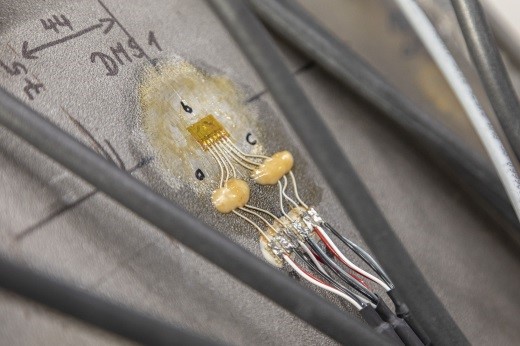
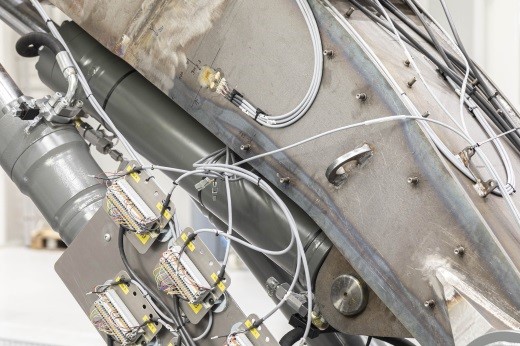
“Top-notch sensor technology like U10M and measurement electronics from HBM are included in all of our test series. When we use our machines, on the construction site for example, the mobile DAQ SomatXR records the acting loads. This allows us to accurately duplicate real-world conditions in our tests at the Development and Demonstration Center.”
Nils Dippon, test engineer Development and Demonstration Center at Liebherr
The Liebherr-Hydraulikbagger GmbH
is one of the world’s leading manufacturers of hydraulic excavators (excavating and material handling technology as well as two-way excavator) and articulated joint dump trucks to meet the highest demands in the construction industry or for moving materials at the harbor. With a Development and Demonstration Center opened in 2018 at the flagship offices in Kirchdorf an der Iller, Liebherr engineers design components for machines that are used worldwide. Founded in 1949, the company employs 1,658 employees in Kirchdorf (as of 2019) and is part of the family-owned corporate group Liebherr-International S.A. with headquarters in Bulle (Switzerland).